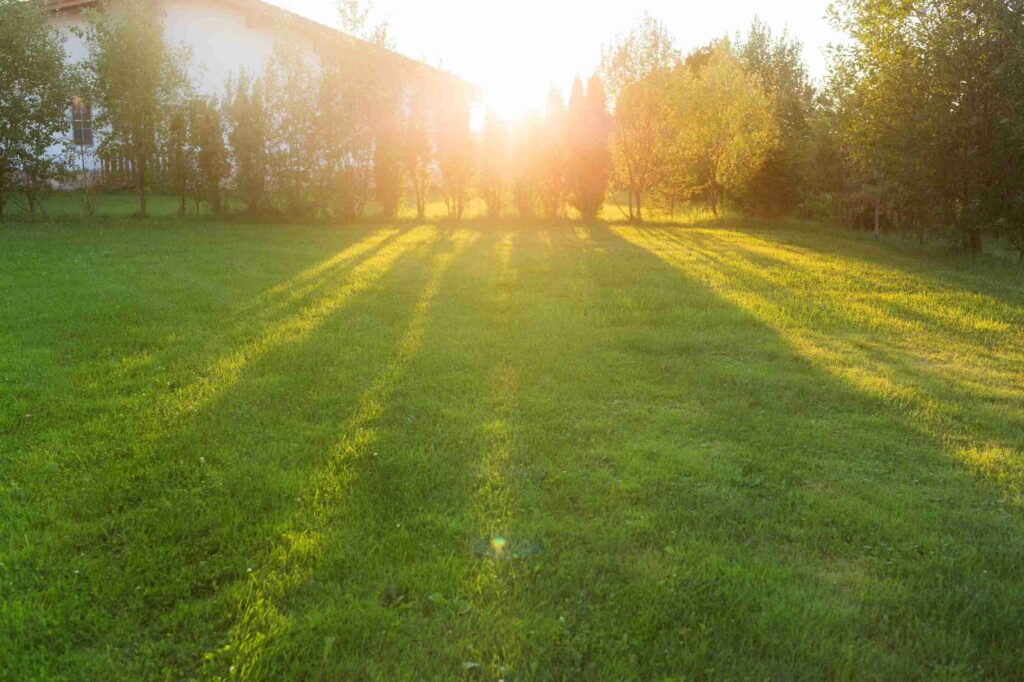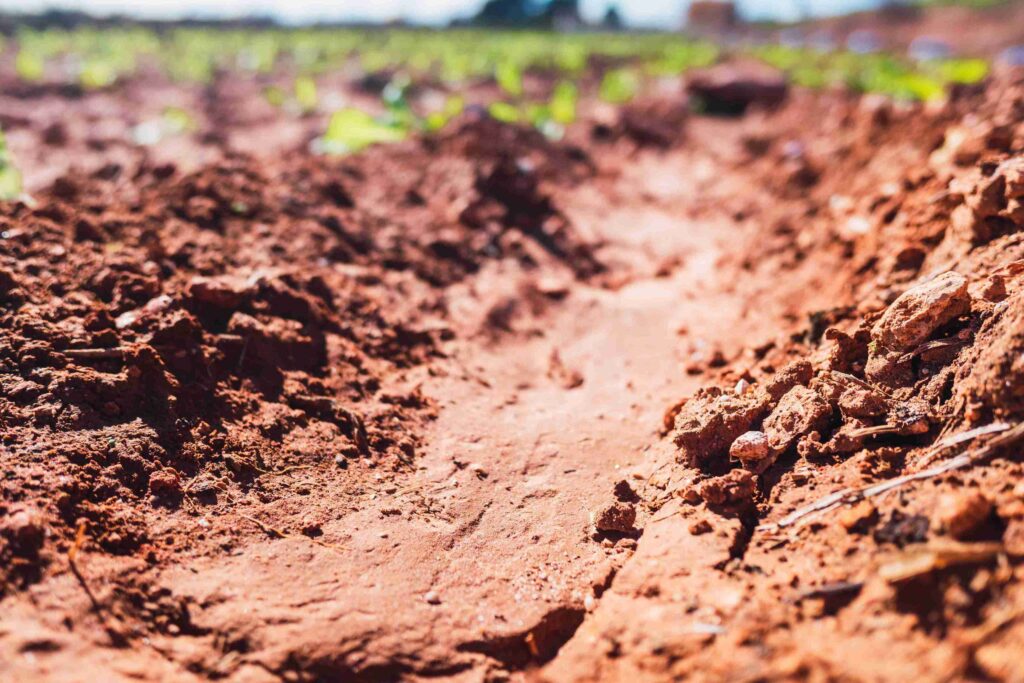
Can Grass Grow In Clay? (Solved)
If you’ve got clay soil in your yard, you’re probably wondering if grass can actually grow there.
It’s a fair question – after all, clay can be pretty stubborn. It’s dense, heavy, and doesn’t always let water or nutrients through easily.
But don’t worry, with the right approach, you can definitely grow a lush, green lawn.
In this post, we’ll show you how to grow grass in clay soil, the best grass types to use, what to avoid, and most importantly, how to set up your soil for success.
What Makes Clay Soil Different?
Clay soil isn’t your typical, sandy, light soil. It’s heavy and dense.
You’ve probably noticed that it can get super sticky when wet or hard as a rock when dry.
The reason for this is that the particles in clay soil are much smaller and closer together than in other types of soil. This makes it harder for air, water, and nutrients to move around.
One of the big challenges with clay is that it can easily become compacted.
When it’s compacted, the grass roots can’t grow deep, and it makes it hard for water and nutrients to reach them.
On top of that, clay soil tends to be either too wet or too dry which is a problem.
Also Read: Will Gas Kill Grass?
Can Grass Grow In Clay Soil?
Yes, grass can grow in clay soil, but it won’t grow as easily as it would in loamy or sandy soil.
Clay soil often has poor drainage, which can leave grass roots sitting in waterlogged conditions.
On the other hand, it can also dry out too quickly, which stresses the grass.
That being said, if you’re working with clay soil, don’t get discouraged. With some proper care and preparation, you can still create a healthy lawn.

You just have to make the soil more suitable for grass growth by improving its texture, drainage, and nutrient levels.
It might take some time and effort, but the good news is, once you get it right, your grass will grow strong and healthy. It’s all about setting the foundation.
Best Grass Types For Clay Soil
Not all grasses are the same, and some varieties are better suited to clay soil than others.
Cool-season grasses tend to do well in clay because they’re more tolerant of the temperature extremes that clay soil can experience.
Also Read: Will Cayenne Pepper Kill Grass?
Some of the best options include:
- Tall fescue handles compact soil with its strong, deep roots
- Perennial ryegrass grows fast and gives a quick green cover
- Bermuda grass loves warm weather and spreads quickly
- Zoysia builds a dense, durable lawn that tolerates clay well
If you’re planting from scratch, go with one of these. They’ll forgive the quirks of clay much more than delicate grasses would.
How To Prepare Clay Soil For Grass
Preparing clay soil for grass isn’t as simple as sprinkling some seed on top and hoping for the best. There’s a bit of work involved, but once you get the soil ready, your grass will have a much better shot at thriving.
Here are the main steps to follow:
#1 Aerate The Soil
Aeration is the first step to improving clay soil.
When soil gets compacted, it’s hard for grass roots to grow deep, and it also prevents water from draining properly.
Aeration helps loosen up the soil, letting water, nutrients, and air get to the roots.
You can aerate the soil by using a lawn aerator, which pulls small plugs of soil out of the ground. This creates holes that allow better airflow and water movement.
It’s best to aerate during the growing season when the grass is actively growing.
#2 Add Organic Matter
Organic matter, like compost, is great for clay soil.
Adding compost helps break up the dense clay particles, improving its texture. The organic matter also gives your grass extra nutrients, which will help it grow healthier and stronger.
Spread a layer of compost over your soil and then work it in.
You can also use other organic materials, like well-rotted manure or leaf mold, if compost isn’t available.
Just make sure whatever you add is broken down enough to be absorbed by the soil.
#3 Do Proper Grading For Drainage
Clay soil tends to hold onto water, and too much water can drown your grass roots.
That’s why drainage is so important. You want to make sure that water isn’t pooling in any low spots or staying on the surface too long.

Proper grading will ensure that the ground slopes away from your house and other structures, allowing water to drain properly. If you notice any areas that tend to stay soggy, you may want to level them out to prevent excess water from sitting on the soil.
Also Read: The Dangers of Root Intrusion
#4 Mix Sand (With Organic Matter)
If your clay soil is especially heavy, adding sand to the mix can help.
But – and this is a big but – don’t just dump a bunch of sand on your lawn thinking it’ll magically fix everything. It’s all about the right balance.
Too much sand can make the soil even more compacted.
So instead, mix sand with organic matter like compost to get a nice, balanced texture that improves drainage and aeration. Mixing sand and organic matter helps create a soil structure that is easier for grass roots to grow in.
It’s not an instant fix, but over time, it’ll make a huge difference in the health of your lawn.
Some Common Mistakes To Avoid
Clay can be frustrating, and it’s easy to make things worse without realizing it.
Here are a few big ones to steer clear of:
- Overwatering as clay already holds water, so frequent shallow watering just creates soggy roots. You should stick to deep, less frequent watering.
- Using only sand. Like I mentioned, this creates a brick-like yard instead of a lawn. Always pair sand with compost or other organic matter.
- If you never aerate, clay will just keep squeezing tighter, and your grass roots won’t stand a chance.
Also, don’t forget to test your soil every year.
Soil conditions can change, and knowing what your soil needs will help you stay on top of it.
Bottom Line
Grass can totally grow in clay soil, but it requires some extra work. By aerating the soil, adding organic matter, and improving drainage, you can give your grass the best chance to thrive.
Choose the right grass type for your climate, and make sure to avoid common mistakes like over-fertilizing or neglecting water needs.
With a little effort, you can transform that stubborn clay soil into a beautiful, green lawn.
So, yes – grass can grow in clay. It just takes a little love and care to get it there.








